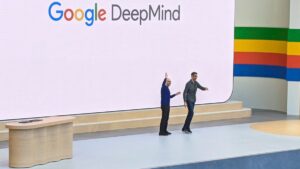Exploring the Inner Workings of Large Language Models with the AI Microscope

Understanding the Internal Mechanisms of Large Language Models
Large language models (LLMs) like Claude and others possess remarkable capabilities, yet understanding how they function internally remains a significant challenge. Recently, Anthropic published two research papers aimed at uncovering the complexities of these models. They focus on identifying interpretable concepts and linking them to the computational circuits that translate these concepts into language.
The Complexity of Language Model Processes
Despite their widespread use, the internal workings of large language models are still not completely understood. This lack of transparency makes it difficult for researchers to explain or interpret how these models approach problem-solving. Each word generated by a model relies on billions of computational processes, which are often still a mystery.
To investigate these hidden processes, Anthropic introduces a technique they refer to as the "AI Microscope." Drawing inspiration from neuroscience, this method aims to identify specific activity patterns and information flows within these complex language models.
What is the AI Microscope?
The AI Microscope involves substituting the large model with a ‘replacement model.’ This new model consists of sparsely-active features that can often symbolize interpretable concepts. For instance, a feature might activate when the model is about to produce a word related to a state capital.
However, it’s important to note that this replacement model won’t always yield the same output as the original model. To mitigate this challenge, researchers utilize a local replacement model tailored for each specific prompt. This involves integrating error terms and fixed attention patterns, allowing the local model to produce outputs matching the original while simplifying computations.
Creating an Attribution Graph
To analyze the flow of features from the prompt to the output, researchers construct what is called an attribution graph. This graph focuses solely on features that affect the final output by pruned away those that do not. This process offers a clearer view of how the model generates its responses.
Key Discoveries from the Research
With the AI Microscope, researchers have made several intriguing discoveries:
Universal Language Concept
One notable finding is evidence of a potential "universal language" within the model. Through experiments, researchers posed questions like "What is the opposite of small?" in various languages. They observed that the same core features were activated across different languages, suggesting that these models may create concepts universally before translating them into specific languages.
Language Generation with Planning
Contrary to the conventional belief that LLMs generate outputs without much foresight, the study of how Claude produces rhymes indicates a level of planning. Before generating the second line of a rhyme, Claude predicts potential relevant words, crafting a response that feels coherent and contextual.
Understanding Hallucination in Models
Another significant aspect explored is the phenomenon of hallucination—when models produce untrue information. This tendency is somewhat intrinsic to their design, as they always aim to generate a next guess. Researchers found this could result from a misalignment between identifying known entities and instances where the model should admit uncertainty. For example, if the model recognizes a name without additional information, it might activate the known entity feature while incorrectly suppressing the ‘I don’t know’ signal, leading to a fabricated response.
Exploring Other Dimensions
Apart from the main findings, Anthropic’s research has also looked into areas like mental math, where models explain their reasoning to arrive at answers, multi-step reasoning, and responses to specific queries, often referred to as "jailbreaks."
These insights contribute to the growing field of interpretability in artificial intelligence. The ultimate goal of their AI Microscope is to enhance how we understand LLM behaviors and ensure alignment with human values. While still in its early stages and limited to smaller prompts, this tool marks an important step forward in interpreting the complexities of large language models.
As the research progresses, Anthropic aims to provide more clarity around how these models function, paving the way for better interpretations and applications of advanced AI systems.





